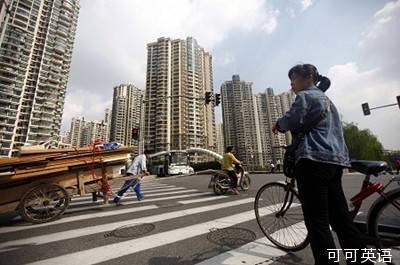For the first time, more people now live in cities than the countryside—a trend of increasing urbanization that is expected to continue.
有史以來第一次,住在城市的人口數(shù)量超過鄉(xiāng)村——這是日益增長的城市化趨勢,且城市化還有望持續(xù)。
Based on data from thousands of cities on everything from number of patents generated to road lengths, researchers at the Santa Fe Institute have uncovered the math by which human settlements grow from town to city to metropolis. So, for example, a social network between people within the city grows in a mathematical relationship with the increase in the size and quality of infrastructure, such as roads, power lines and the like.

根據(jù)從上千所城市得來的各種數(shù)據(jù)(從專利申請的數(shù)量到道路長度),圣塔菲研究所的研究人員發(fā)現(xiàn)了從鄉(xiāng)鎮(zhèn)到城市到大都市人口數(shù)量的遞增的數(shù)學規(guī)律。例如城里人之間的社會網(wǎng)絡的遞增與城市基礎設施的規(guī)模和品質的遞增呈正比。
In essence, the bigger the city, the greater the opportunities—but negatives or costs also rise, such as crime or traffic congestion. To optimize urban function, the research suggests following policies that allow for a denser web of human connections while minimizing the costs imposed by transportation and energy use.
本質上,城市規(guī)模越大,機會就越多——但負面作用或成本也隨之上升,例如犯罪事件和交通。為了優(yōu)化城市功能,研究人員提出了以下政策:在最小化交通和能源成本的同時,加強建設更緊密的人際關系網(wǎng)。
The real test of these ideas will be how they stack up against data from the burgeoning cities of the developing world. China alone has added hundreds of cities with millions of people in the last few decades—and wants to add yet more. To do it right, city planners will need to brush up on their math.
對這些觀點真正的考驗在于他們如何與來自發(fā)展中國家新興城市的數(shù)據(jù)相較量。在過去幾十年里,僅在中國就新增了數(shù)百個人口超過百萬的城市,還會有更多的城市加入。為了采用正確的方法,城市規(guī)劃者需要溫習他們的數(shù)學了。
原文譯文屬可可原創(chuàng),未經(jīng)允許請勿轉載!













